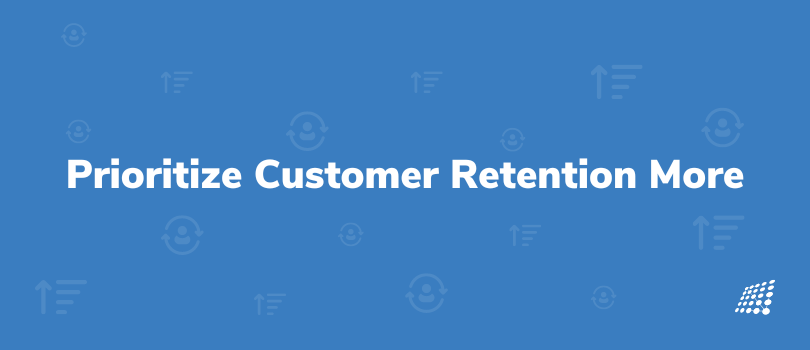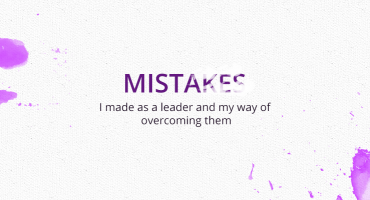Why Your Business Should Prioritize Customer Retention More

When choosing between customer retention and customer acquisition, the average entrepreneur will tell you that their priorities lies in the latter. Not that they don't think that former customers are important, but most seem to have this notion that customer retention and customer acquisition are two totally separate, but slightly similar things – like two parallel lines that are never meant to meet – and that customer acquisition is, by far, more important.
Now, there might be some truth to that. Having a steady stream of new customers has long been used to measure the success of any business. However, as an entrepreneur, you shouldn't be quick to forget about former and existing customers either.
The truth is, when done the right way, campaigns aimed towards retaining customers and satisfying repeat clients can also help bring new customers to your business. Case in point, how often have you referred your favourite restaurant to a friend because of their excellent customer service? Or how you swear by that pub down the road because the barista almost always knows your drink the moment you show up and sit down?
In the same way, recurring clients can refer your business to their network and spread good news about it via word-of-mouth.
Put simply, focusing most of your campaigns towards attracting new prospects and neglecting customers already in the field is a huge waste of opportunity and a mistake that you want to avoid.
The Value of Repeat Customers
The cost of acquiring a new customer depends on the study and the industry. However, regardless of the industry or study, it is widely accepted that reaching out and marketing to a new audience is a lot more expensive than it is to cater to a currently existing client base. Even so, only 40% of companies and 30% of agencies practice having an equal focus on acquiring and retaining customers, with majority emphasizing customer acquisition over customer retention.
What happens as a result of such a strategy is that, while a business may enjoy a steady stream of regular first-time customers, their repeat client numbers will be low. This is a huge waste, because the ever-so-undervalued regular patrons are at least 14 times more likely to buy from your business than new customers. Not to mention, it's easier to educate them about the benefits of your products or working with you; a few calls or an e-mail or a gift every now and then is all it takes to put you in the front of their minds.
To cut it short, without an effective customer retention strategy in place, a business will lose out on a lot of money without even knowing why.
Fortunately, this isn't an entirely damning mistake. It is always possible for businesses to change and start adopting strategies that focus a bit less on the before and focus a lot more on the after when it comes to customers so that they can start enjoying the benefits of catering more to arguably their biggest assets – repeat clients.
How to Retain Customers
You have to keep in mind that you can't always retain customers. Despite your best efforts, you're never going to get all of your clients to come back for more. But, that's okay. Your goal isn't to retain everybody. You only need some.
By focusing more of your efforts on keeping the few loyal customers you have, you'll soon learn what kind of work you need to put in to help keep the oft-underrated but extremely important loyal customer base that will serve as an integral part of your business' long-term strategy.
Take Your Time to Get To Know Your Customers
According to numerous behavioral studies, customers generally have a positive experience with businesses that do not rush or ignore them. Training your staff to spend a bit more time with each client or customer can go a long way in improving their experience. This doesn't necessarily mean making small talk with everyone, though that might work. Rather, this means taking the time to understand the needs of your customer.
Think going on a date and taking things slow, putting in the time to get to know who you really are dating. This way, you can create that sense of a real relationship with your customers that they might eventually reciprocate and start becoming a regular.
This doesn't always have to involve face-to-face interaction either.
Using mobile apps can help you keep track of your customers via advanced analytics. Keeping tabs on the in-app activity of your audience can give you valuable information about what kind of content they are searching for the most, allowing you to better refine your sales and marketing strategies, which might include loyalty programs, and keep your customers satisfied and coming back for more.
1. It's a Data-Driven Market
Do you know why Google and Uber are market leaders in their respective industries?
It's not that they're the first nor the most aggressive, although the latter might be true. But, that's only because they're not just taking risks for the sake of it: Google and Uber gathered the necessary data, refined their strategies and moved forward by taking calculated risks that almost always end up in a win-win situation for them.
Even if your business doesn't have a mobile app yet, you still have a lot of data to work with.
Use that to your advantage so you create the illusion that you always know what your customers need before they even need it.
2. Ask for Feedback
What better way is there to know what your customers need and want than to ask them directly?
A feedback system, either in the form of a survey or review, or actually taking the time to sit down with your loyal customers to ask them what it would take to keep them coming back for more, can go a long way in learning what your business' strengths and weaknesses are.
Feedback may not be equally important across all types of businesses, like how restaurants may value what their patrons think more about their food and service compared to a retail shop, but it matters all the same.
Also, by asking your clients for feedback, you make them feel valuable and important to your business, and if they see that you took their words seriously, you'll most likely have gained their loyalty.
Lastly, speaking of taking your customer's words seriously, try to keep an open mind and put into effect what you believe are valid criticisms.
3. Do Something Nice Out of the Blue
If you've been in a relationship before or you currently are in one, you most likely remember more of the surprises and the things that happened and things that you did out of the spur of the moment than the planned stuff.
It's just how our brain works, whether for better or for worse.
You can use this to your advantage by sending a free gift or even a quick follow-up message to your customers out of the blue.
Do try to use the element of surprise just for the sake of it, though. Having an ulterior motive destroys the purpose of this, and most customers will know immediately if you're just doing it to try and sell them something new or attempting to bring them back.
4. Be Proactive
If there's one thing that separates good customer service from great customer service is being proactive.
A proactive customer service strategy involves always thinking ahead. This can be something as simple as a quick follow-up message, as mentioned earlier, or it can be telling a client that the warranty for the aircon that they purchased from you is already up, or for your loyal clients, informing them then there is an upcoming sale soon and letting them now before you make a huge announcement.
These may sound like small things, and they are, but they'll have a huge impact on your business in the long run.
You and your team put in a lot of effort to reach out and attract a new audience. Don't let all of that hard work go to waste. Start investing in retaining the customers you just gained and you'll have one of the key factors that will help keep your business solid for years to come.

A Dive into Cybersecurity

Magento 2 Custom Module Development


